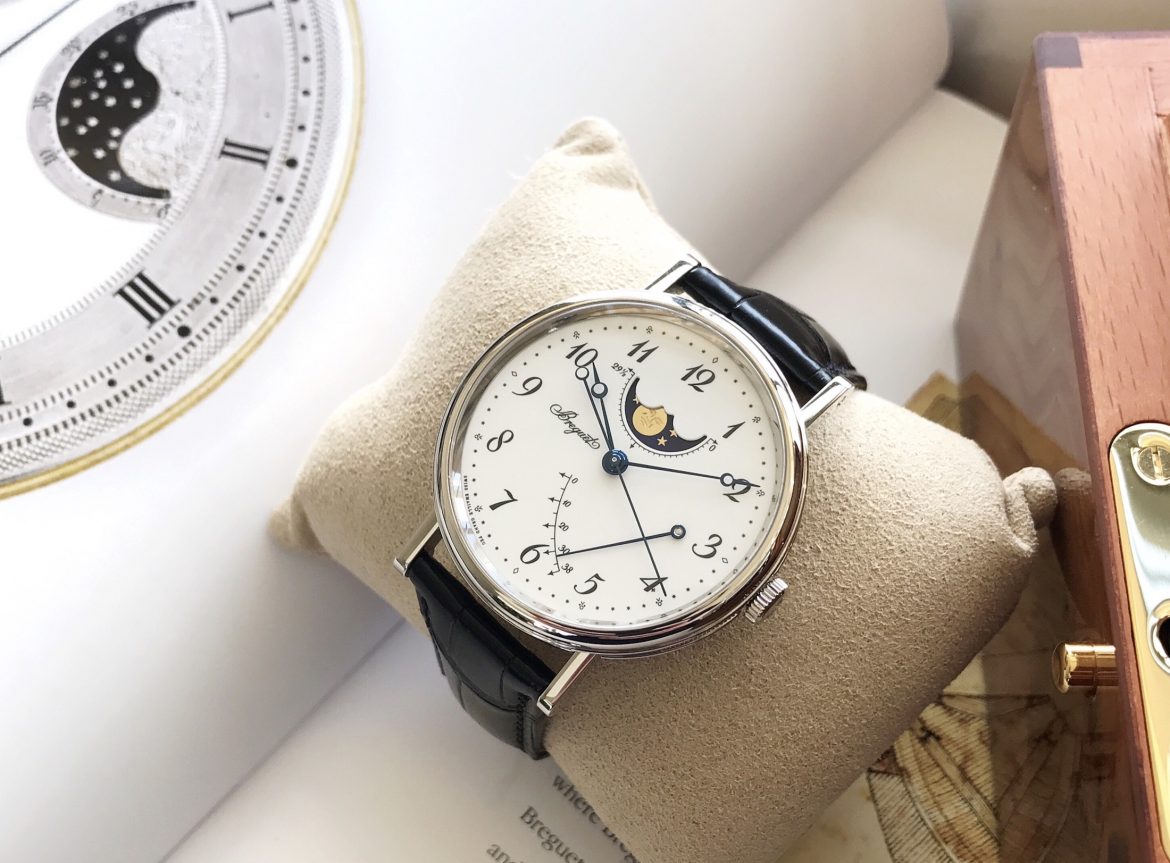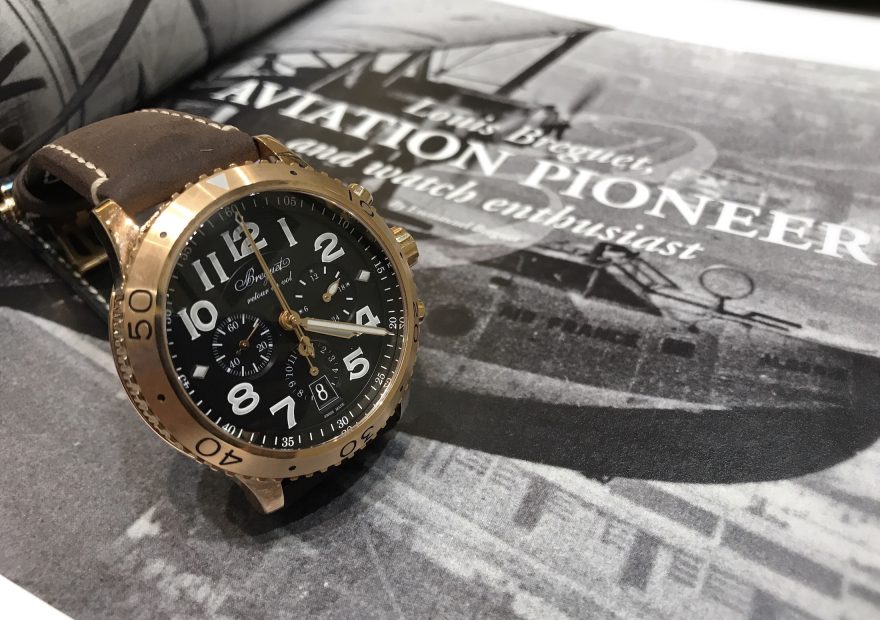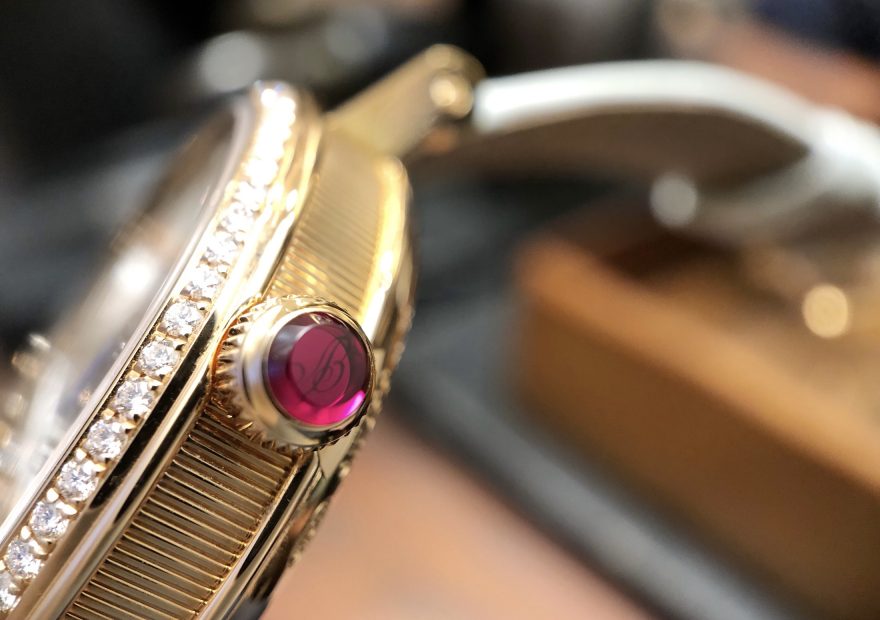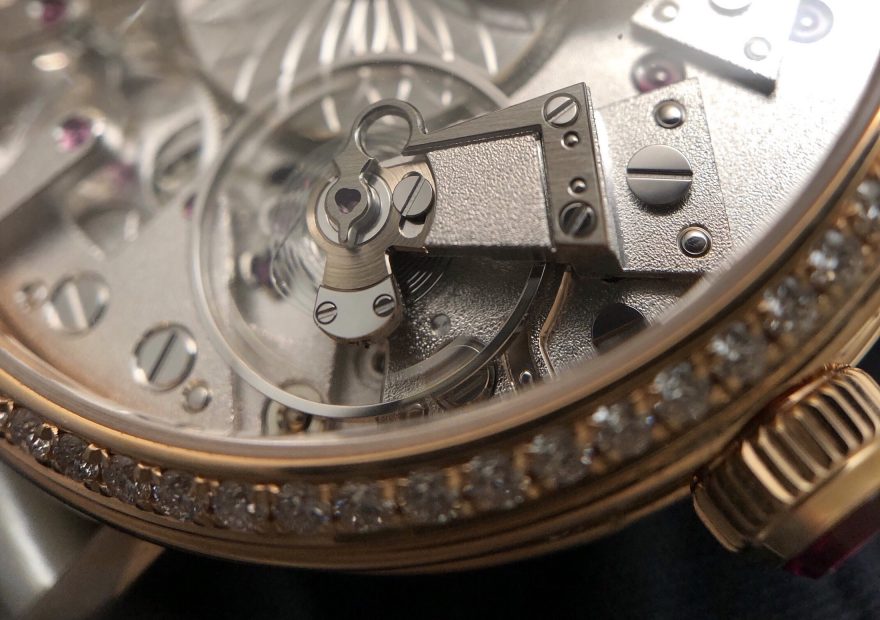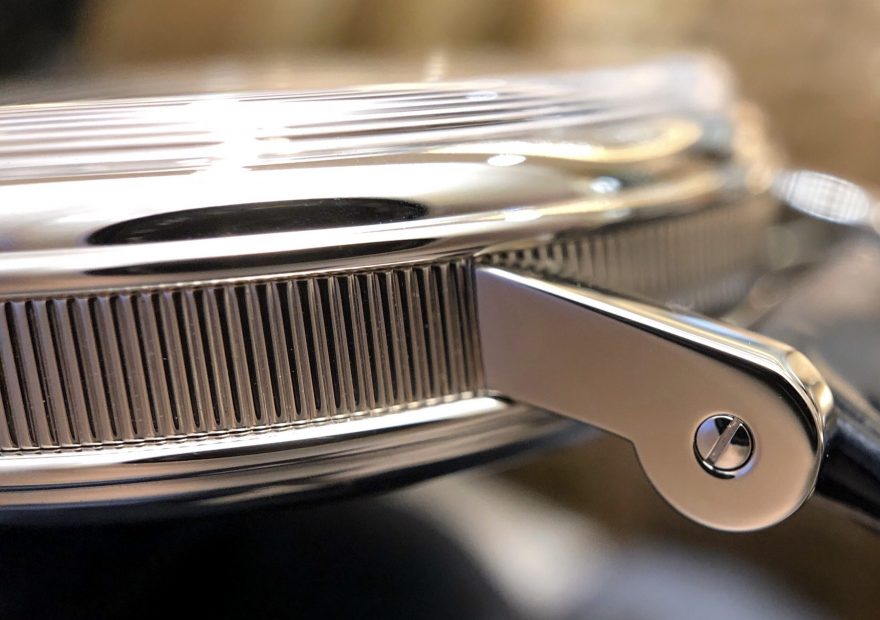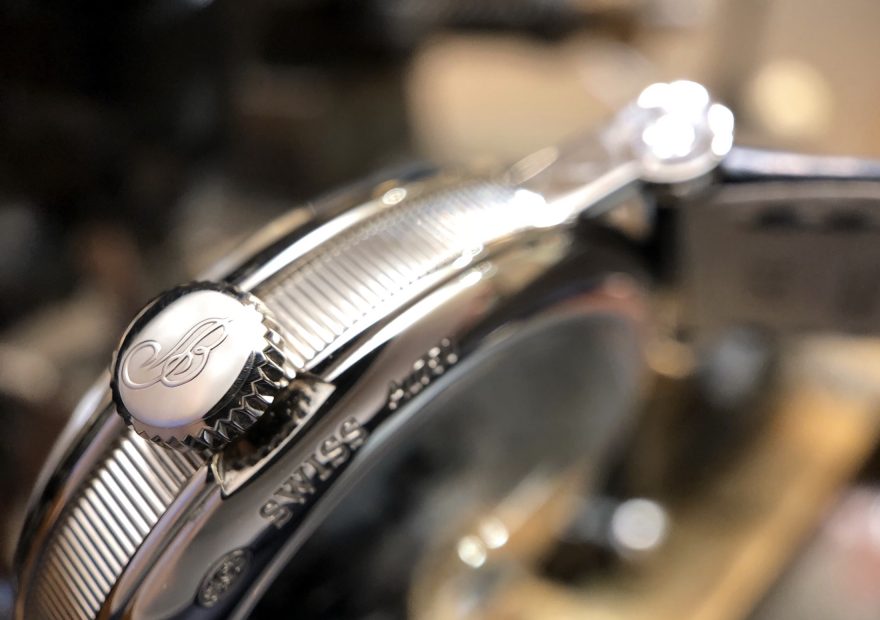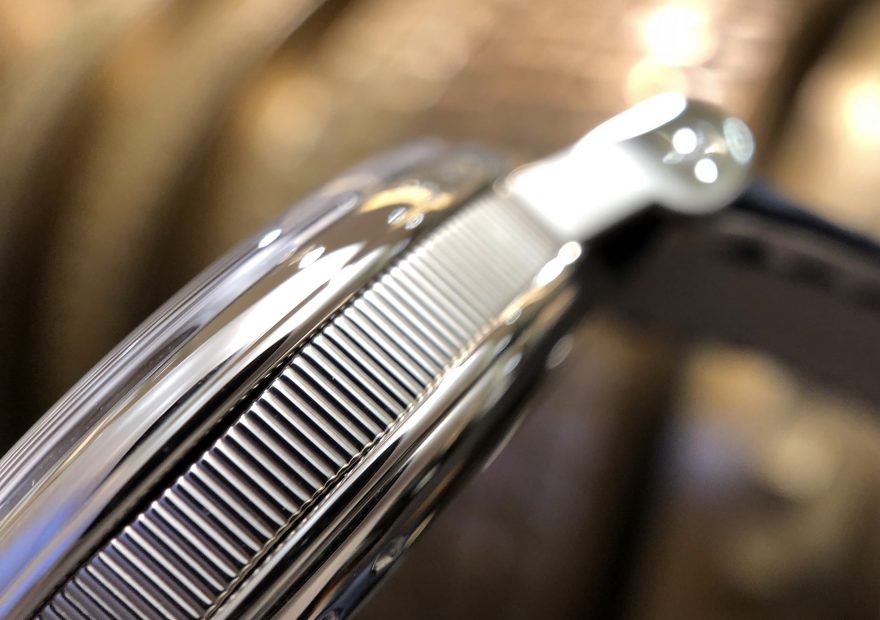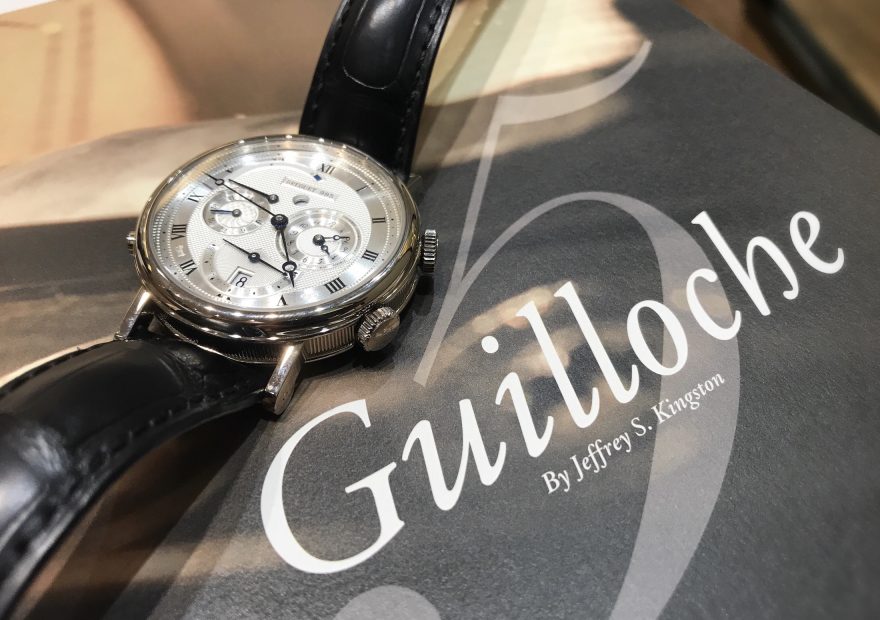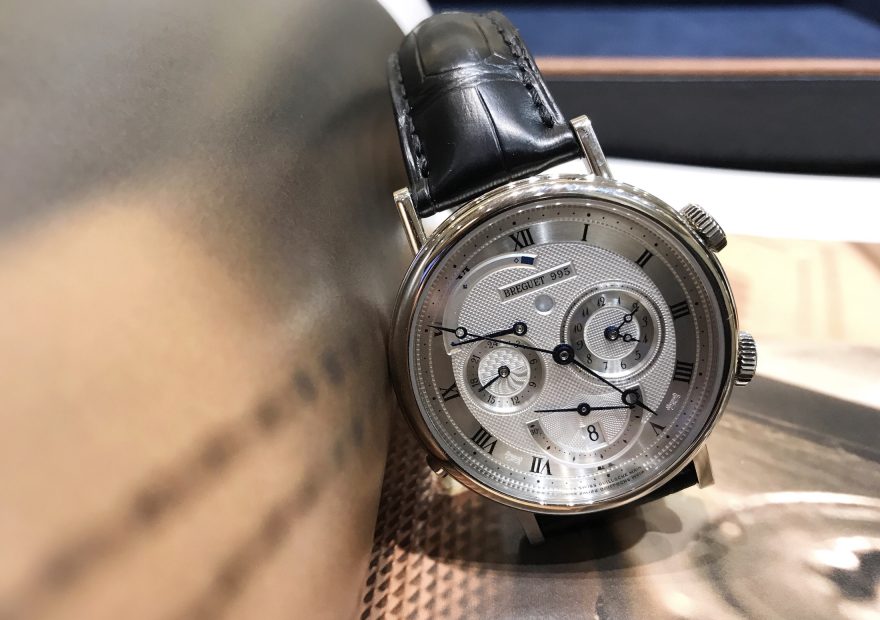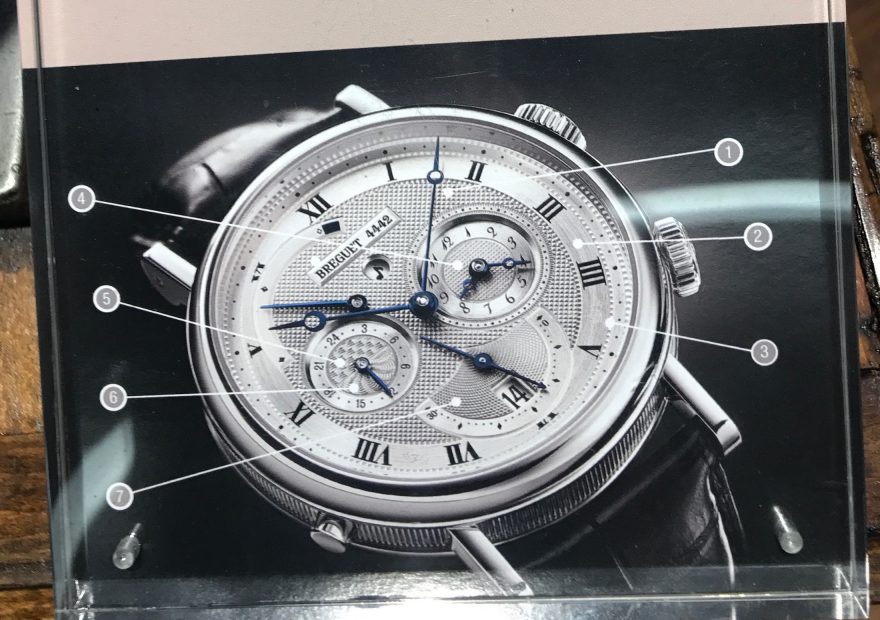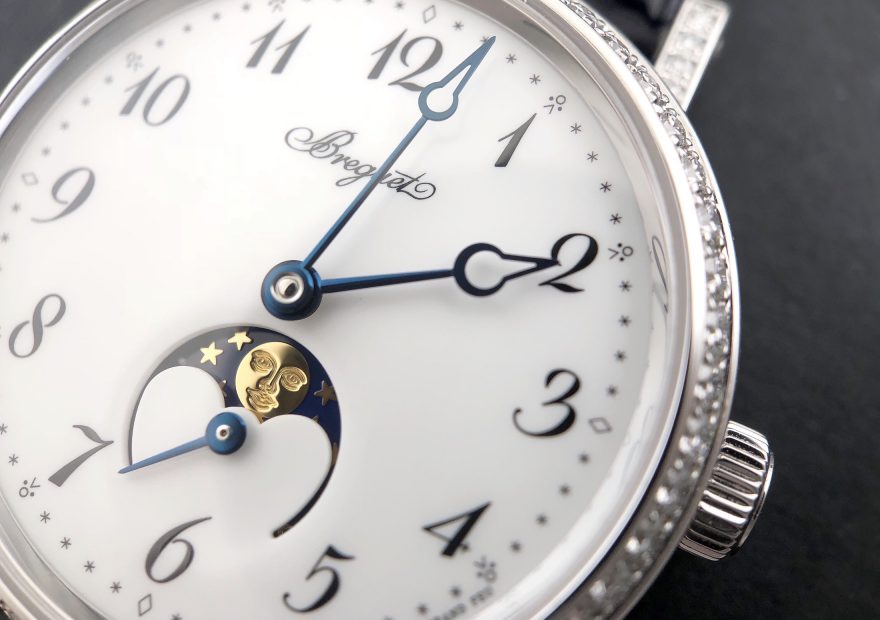What better way to learn about timepieces than from Breguet, the brand that created the tourbillon and first wristwatch in the world?
Ask a woman if she prefers watches or jewellery, there is a chance that she would pick the latter. As I have, in my earlier years. After all, sparklies are pretty, and ever so special regardless of whether they are bought for self or gifted by a loved one.
The younger me revelled in the stories that my father (who works in engineering and metallurgy) used to share from his work travels to Europe. He told me stories of German automation and engineering, metal alloy compositions and properties, and interestingly, about precision of Swiss watchmaking. He bought me my first classic timepiece when I was ten. I still have it – its time-weathered hands have aged at the tips, but the mechanism still works.
If you think watches are a “men’s thing”, here is a piece of trivia that may surprise you: The very first wrist watch ever conceived was for a woman – Caroline Murat, Queen of Naples. Abraham-Louis Breguet was commissioned on 6 June 1810 to create this unique timepiece.

Breguet, founded in Paris, France by Abraham-Louis Breguet in 1775. Featured: Breguet Tradition 7097.
My father had told me about Swiss-born watchmaker Abraham-Louis Breguet who founded the brand in Paris, France. But it was the discovery of the heritage of this House that my dormant fascination with watches came to life again, decades later, when I entered the world of Breguet seeking a watch gift for the husband.
Horological literature can certainly be overwhelming and daunting to the uninitiated, especially with all the modern developments. I have some key learnings from my immersive journey into the world of watches which I shall share with you here.
Let’s start with demystifying the Tourbillon (tür-bē-yōⁿ). By definition, the Tourbillon is “a construct which by constant rotation cancels out the effects of earthly gravity.” But what does this really mean?
What you need to know:
- Gravity is the most compelling force that affects the accuracy of watch movements. This was particularly so in the early years (from the 16th century) when pocket watches typically sat vertically in men’s waist coats. The positional variations affect the precision of the watch movement, and in turn the accuracy of time-telling.
- Abraham-Louis Breguet became recognised as the inventor of the “Tourbillon”, when he was issued a patent for his work on this new regulator on June 26, 1801.
- Breguet named this invention “Tourbillon”, a term which he borrowed from astronomy. French eighteenth-century scholars referred to a planetary system as “tourbillon”. The word also means “whirlwind” in French.
- The Tourbillon mitigates the effect of gravity. How: Abraham-Louis Breguet installed the entire escapement, specifically the parts most sensitive to gravity (the balance and spring, the lever, and the escape-wheel) inside a mobile carriage that executes a complete rotation every minute. As the parts get engaged in regular, repeated rotation within the carriage, the gravitational forces on a vertically positioned watch are negated.
The Tourbillon is one of the most fascinating complications you can find on a watch. Think whirlwind in a well.
A complication refers to any indication beyond the hours and minutes displayed on the dial. A date is a complication. Chronographs, power reserve indicators, perpetual calendars, minute-repeaters are all complications. A moon phase indicator – a mechanism and display representing the different phases of the moon – is also a complication. A complete lunation takes 29 days, 12 hours, 44 minutes and 2.8 seconds and is divided into four phases: new moon, first quarter, full moon, and last quarter.
Legacy watchmakers are constantly challenging themselves to present refined tourbillon watches endowed with a variety of complications. I marvel at how the intricate watch movement, also known as the calibre, gets smaller and more compact with each innovation. Consequently, the watch casings that house the calibre are getting smaller and thinner.
Some of my favourite watch cases are undoubtedly from Breguet. Each of their watches feature a fluted caseband – the middle part of the watch case – which was developed over two centuries ago, and beautifully decorated with fine striations.
It is also this House that first used the time-honoured craft of guillochage on watches. The technique, also referred to as engine turning, involves etching patterns on the watch dial, and serves more than a decorative purpose. The combination of different types of guillochage on a single dial can increase legibility for the complication indicators. Case in point: The Breguet Le Réveil du Tsar features a remarkable 7 different types of guilloché patterns.
I tend to prefer Roman numerals on watch dials, but there is something about the Arabic numerals on the grand feu enamel dial of my Classique Moonphase Dame 9088 that drew me to it. These distinctive Breguet numerals designed by Abraham-Louis Breguet first appeared on the dial with tiny stars to mark the minutes and stylised fleur-de-lys at five-minute intervals before the French Revolution. The definitive form of the numerals was set by 1790.
You may have heard others speak of “Breguet hands” even when discussing timepieces from other watchmakers. Described to resemble an off-centred hollow apple, the distinctive style of ‘Breguet hands’ gained prominence and popularity since their introduction in 1783. Two centuries on, these famous and iconic blue hands are signatures on all Breguet timepieces.
During my recent visit to Paris, I had the privilege of visiting the Breguet museum, housed within its Paris boutique on Place Vendôme. There are three Breguet Museums worldwide: Paris, Zürich, and Shanghai. Paris is home to the most extensive number of heritage pieces, many of which were commissioned by notable patrons of the brand (some even before they became the Greats in history). These include:
- Perpetual repeating watch no.5 from 1794, with power reserve, moon phase, and seconds indications on its guilloché silver dial. This simple looking but complicated “à toc” quarter repeater timepiece strikes time with a hammer on the inside of the case rather than on gongs;
- Perpetual quarter-repeating watch no.27, finished in August 1782 and the oldest surviving self-winding watch by Breguet;
- Repeating watch no.2822, one of the earliest pieces with an off-centre chapter ring (last owned by the Marquess of Exeter);
- Tact watch no.611 purchased by Madame Bonaparte on 18 February 1800 (before she became Empress Joséphine in 1804).
- Watch no.4420 sold on October 3, 1825 to H.M. King George IV of Great Britain;
- Ring-watch with alarm function, sold to Prince Alexander Demidov on 18 October 1836. This ring watch features the alarm function, winding and time-set crown on the right, and a smaller alarm-set knob on the left. The alarm triggers a little needle that pricks the finger. (I attempted a macro shot of the needle of this intriguing creation.)
Since the early years, the House has created registers of commissions and ownership, production and repairs, for the purpose of origin and provenance. These are held preciously in Breguet archives, with current day records still being maintained impeccably.
Today, every Breguet watch bears a unique production number, in keeping with tradition. This unique number may be displayed on the dial or case back. Owners of Breguet watches can have their names included in the ownership registers, as did the many patrons before. As a mark of authenticity, most Breguet watches have a secret signature etched into the dial, which you might spot on close examination. Even on a grand feu enamel dial.
Finally, I end this post with four basics. Elementary as they may be for some, these are key terms to know, when navigating the world of time.
A quartz watch is powered by an electrically (battery) driven quartz crystal; while

The rotor – also known as the oscillating weight that pivots inside a self-winding watch – seen through the sapphire case back of the (automatic) Breguet Classique Moon Phase Dame 9088
a mechanical watch is powered by a clockwise mechanism, which is driven by a mainspring that must be hand wound periodically. This creates a transmitting force through the gears to move a balance wheel that oscillates back and forth at a constant rate. Found within the same movement is the escapement, a device that regulates the energy generated (ensuring the amount is constant and equal) to move the watch’s hands.
Watches that require manual hand-winding are referred to as mechanical manual timepieces. This is different from mechanical automatic watches, which are self-winding. This distinction can be visually identified by the rotor, which is the oscillating weight that rotates with the natural movements of the wearer’s wrist in order to wind the mainspring. The rotor is usually visible through a sapphire case back.
There is so much to share about watches, and in my future stories to come, I will.
About the timepieces featured in this post:
Classique 7787
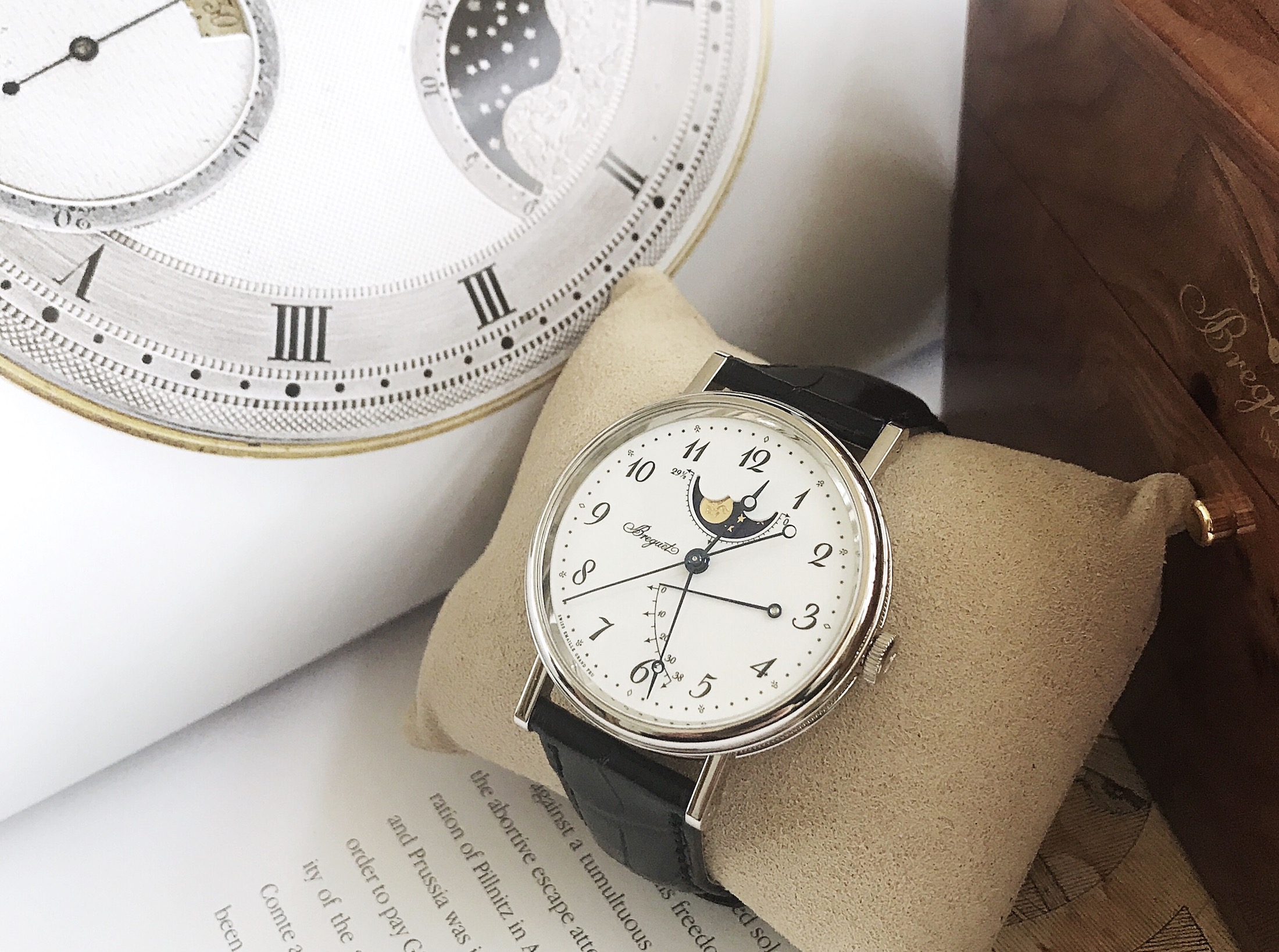 Case in 18k white gold with fluted caseband. Sapphire-crystal caseback. 39mm diameter. Dial in “Grand Feu” enamel. Age and phases of the moon. Power reserve indication. Self-winding movement, Cal. 591DRL. 38-hour power reserve. Swiss straight-line lever escapement in silicon. Balance spring in silicon. Balance frequency 4Hz. Available in rose gold, and silvered gold dial.
Case in 18k white gold with fluted caseband. Sapphire-crystal caseback. 39mm diameter. Dial in “Grand Feu” enamel. Age and phases of the moon. Power reserve indication. Self-winding movement, Cal. 591DRL. 38-hour power reserve. Swiss straight-line lever escapement in silicon. Balance spring in silicon. Balance frequency 4Hz. Available in rose gold, and silvered gold dial.
Classique Moonphase Dame 9088

Case in 18k white gold with a fluted caseband. Bezel and lugs set with 66 brilliant-cut diamonds (approx. 1.04 cts). Sapphire-crystal caseback. 30mm diameter. Welded lugs with screw bars. Water-resistant to 3 bar (30m). Dial in “grand feu” enamel. Individually numbered and signed Breguet. Hours chapter with Arabic numerals. Moon-age and -phase indicator, plus small seconds at 6 o’clock. Breguet open-tipped hands in blued steel. Self-winding movement, numbered and signed Breguet. Cal. 537L. 83/4 lignes. 26 jewels. 45 hours power reserve. In-line Swiss lever escapement in silicon. Silicon balance-spring. Balance frequency 3.5Hz. Adjusted in 6 positions. Leather strap.
Classique 5140

Classique wristwatch in 18k white gold. Selfwinding movement with seconds subdial. Balance spring and lever in silicon. Silvered gold dial, hand-engraved on a rose engine. Water-resistant to 3 bar (30 m). Diameter : 40mm. Also in yellow gold. Also with white grand feu enamel dial, Breguet Arabic numerals and Secret signature.
Le Réveil du Tsar Grand Feu Enamel

Case in 18K rose gold with fluted caseband. Sapphire-crystal caseback. Diameter 39 mm. Rounded horns welded to the case, screw pins securing the strap. Water-resistant to 3 bar (30m). Dial in oven-fired white enamel with secret signature. Individually numbered and signed ‘Breguet’. Chapter ring with Breguet Arabic numerals. Open-tipped Breguet hands in blued steel. Running seconds and date at 6 o’clock. Second time-zone indication at 9 o’clock. Alarm-time indicator at 3 o’clock. Alarm’s power reserve on an arc at 11 o’clock. Alarm on/off indicator in a round aperture at 12 o’clock. Movement: self-winding mechanical movement. Numbered and signed Breguet. Cal. 519F. 12 lines. 38 jewels. 45-hour power reserve. 18K gold rotor, hand engraved on a rose engine. Straight-line lever escapement, 4-Hz balance-wheel with regulating screws. Adjusted in 5 positions.
Type XXI 3817 Chronograph

Designed in the 1950s for the French naval air army, the Type XX returns to the Breguet collection in a civilian version fitted with a self-winding movement.
Case in steel with a fluted caseband. Sapphire-crystal caseback. 42mm diameter. Bidirectional rotating bezel. Rounded lugs. Screw-locked crown. Water-resistant to 10 bar (100m). Dial slate grey, signed Breguet. Hours chapter with luminescent Arabic numerals. Day/night indicator at 3 o’clock. 12-hour totalizer and date at 6 o’clock. Small seconds at 9 o’clock. Central minute totalizer. Luminescent hands and dots. Self-winding chronograph movement, with “flyback” function. Numbered and signed Breguet. Cal. 584Q/2. 131/2 lignes, 26 jewels. 48 hours power reserve. Inverted in-line Swiss lever escapement with silicon pallets. Silicon balance-spring. Balance frequency 4Hz. Adjusted in 6 positions. Strap in calfskin leather.
Tradition 7097

Tradition wristwatch in 18k white gold. Self-winding movement. Retrograde small seconds at 10 o’clock. Off-centred silvered gold dial, engine-turned by hand. Sapphire case back. Water-resistant to 3 bar (30 meters). Diameter : 40 mm. Also available in 18-carat rose gold.
Tradition Dame 7038

Case in 18k rose gold with fluted caseband. Bezel set with 68 brilliant-cut diamonds (approx. 0.895 ct). Sapphire-crystal caseback. 37mm diameter. Welded lugs with screw bars. Water-resistant to 3 bar (30m). Dial in natural white mother-of-pearl, engine-turned and offset at 12 o’clock. Individually numbered and signed Breguet. Hours chapter with Arabic Breguet numerals. Breguet open-tipped hands in gold. Self-winding movement, Cal. 505SR. Numbered and signed Breguet. Retrograde seconds engraved on the movement face. 14½ lignes. 38 jewels. 50-hour power reserve. Inverted in-line lever escapement with silicon pallets. Breguet balance spring in silicon. Balance frequency 3Hz. Adjusted in 6 positions. Alligator leather strap with gold pin buckle set with 19 brilliant-cut diamonds (approx. 0.135 ct). Also available in white gold with Tahitian mother-of-pearl dial.
Feature images courtesy of author. Additional styled watch images by Curatedition, all rights reserved.
Related links:
Breguet’s Reine de Naples, for Love

